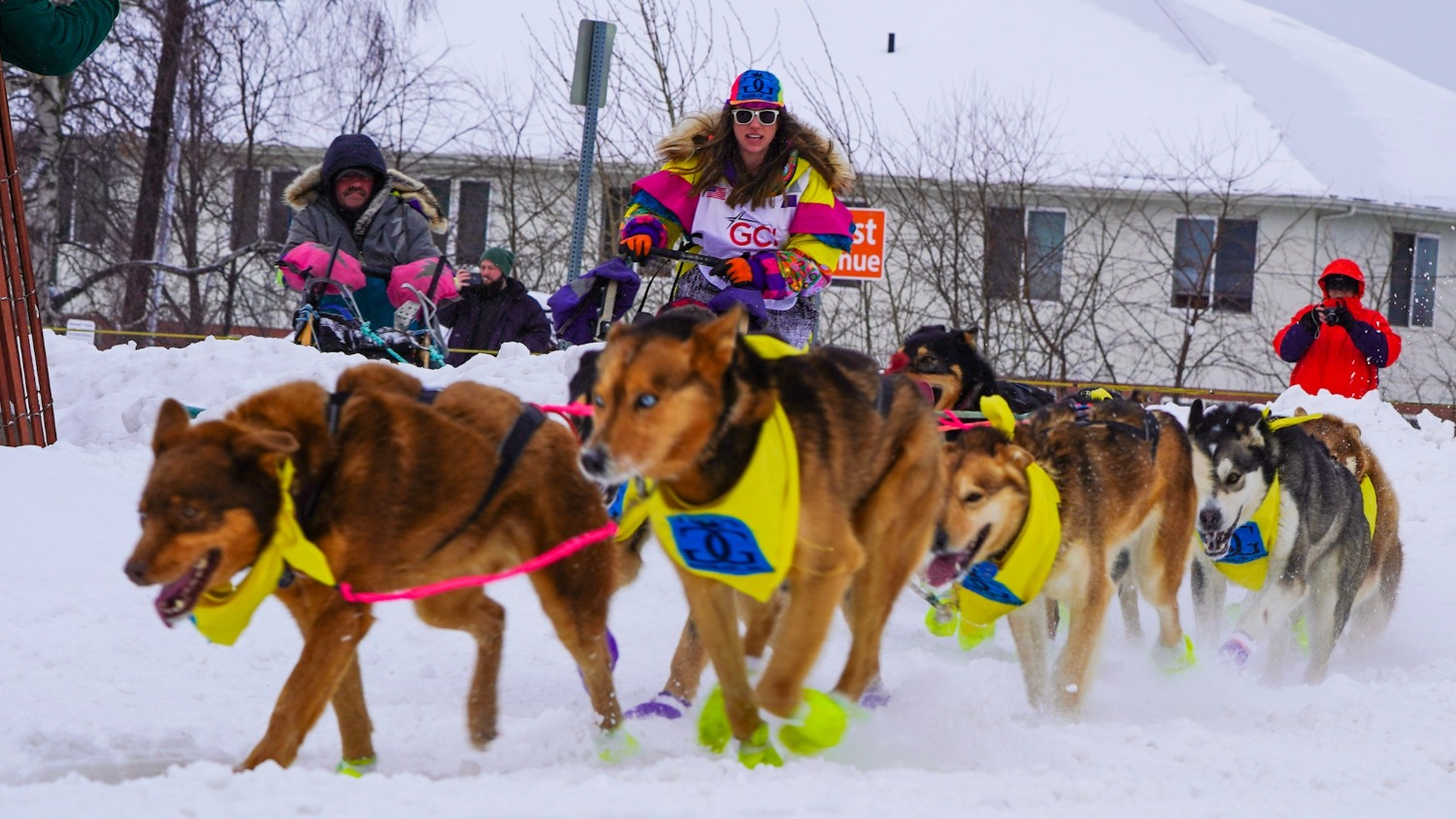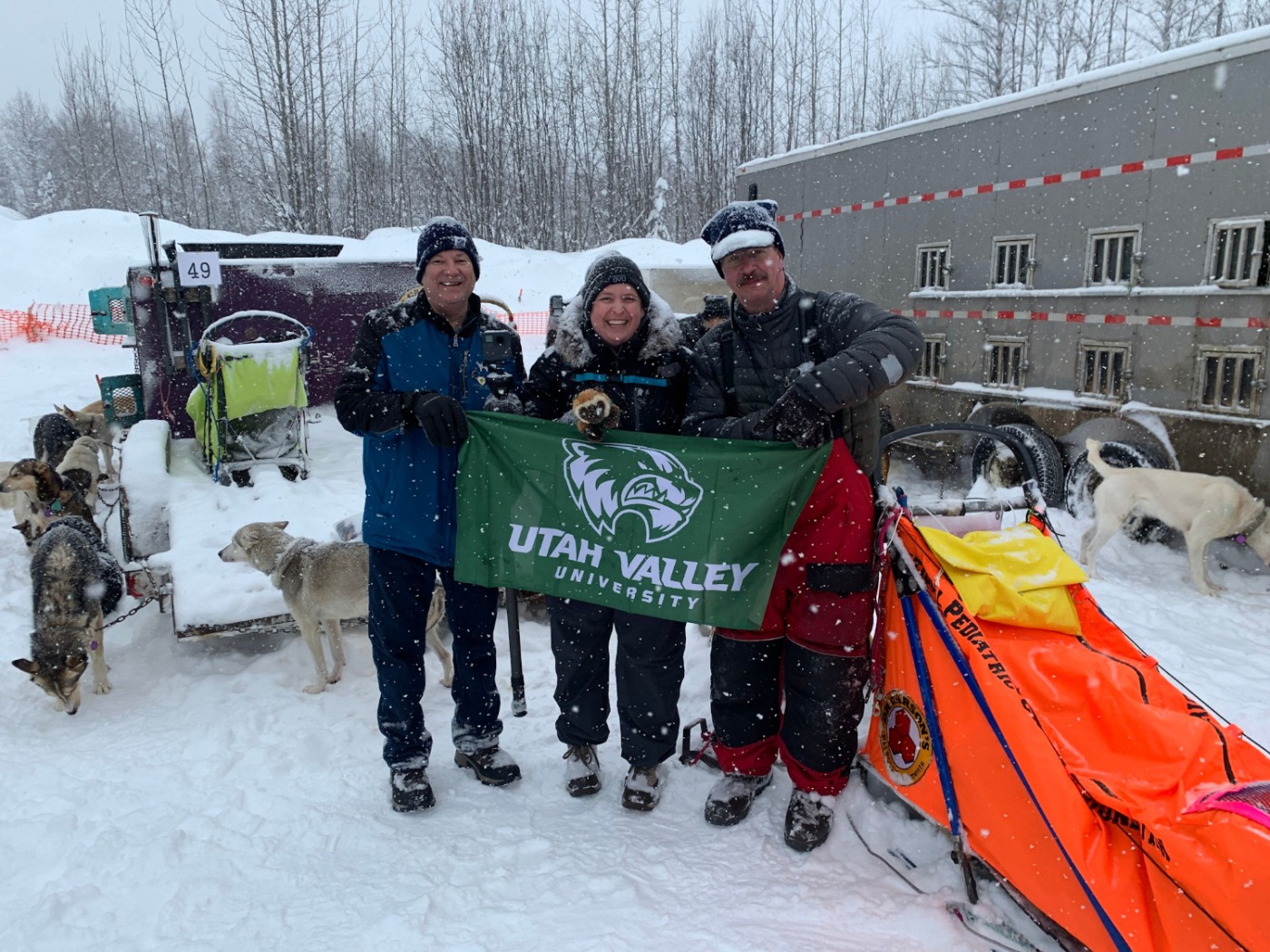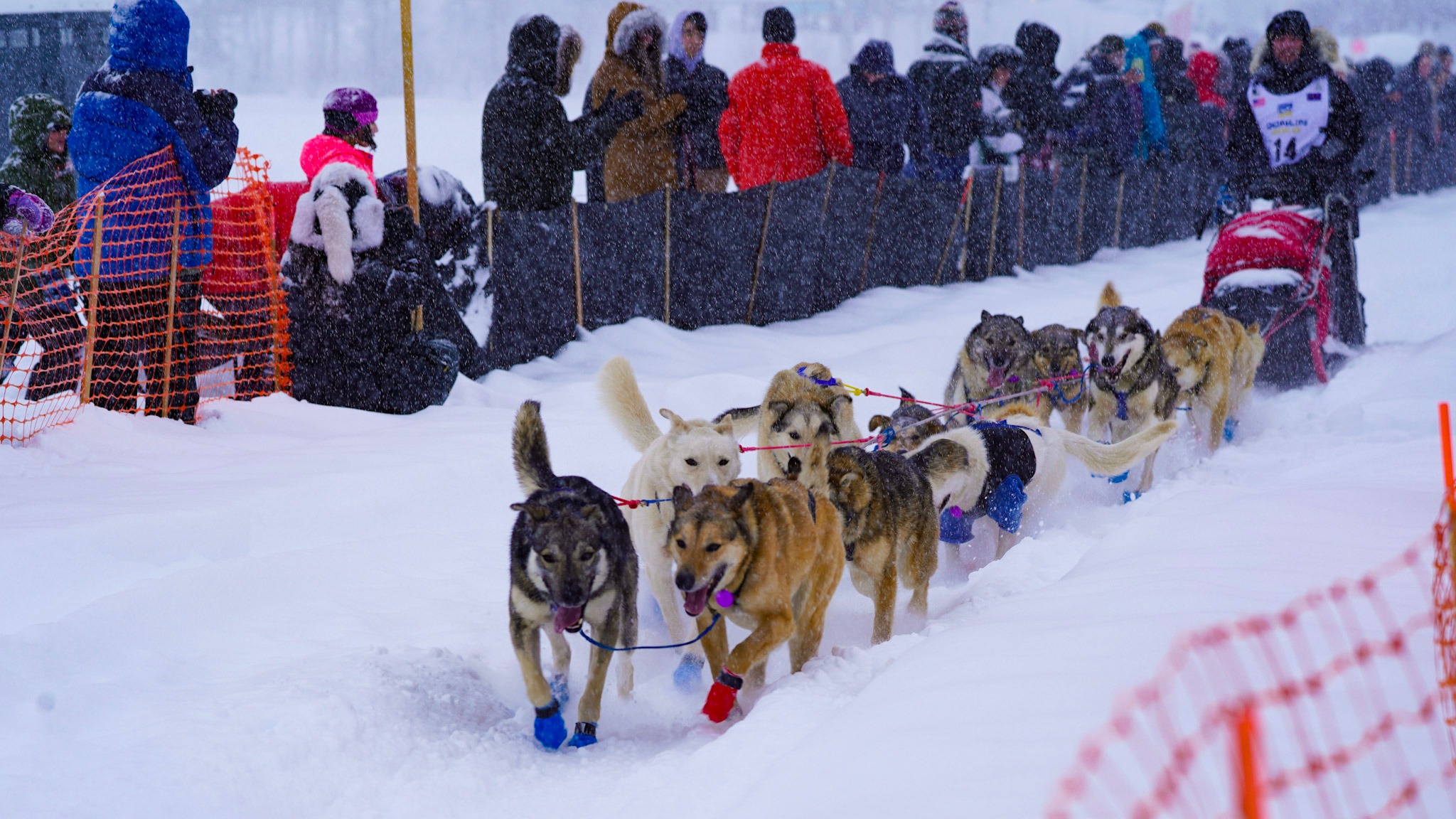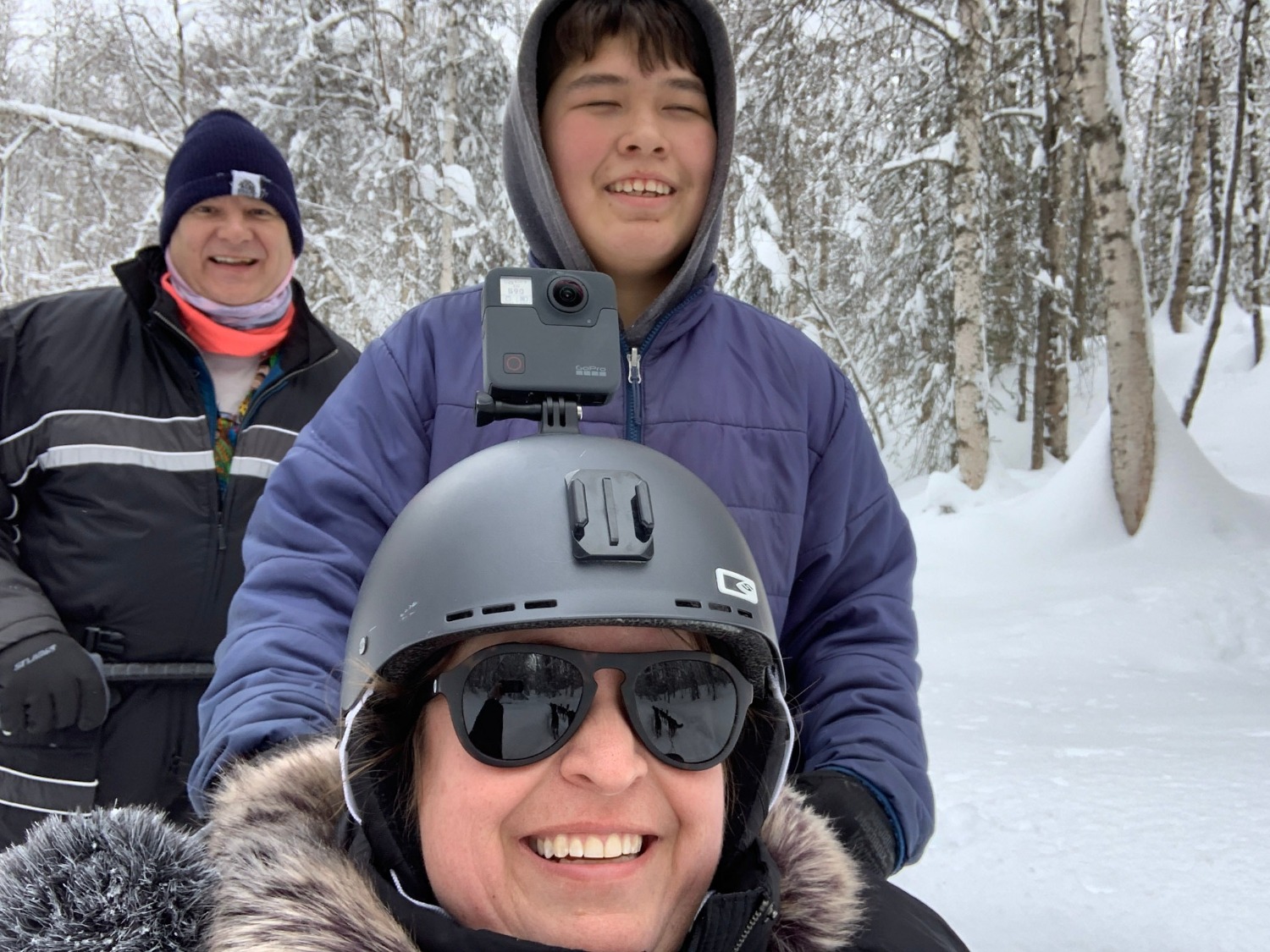DGM Scouts the 2020 Iditarod for an Interaction Design Project


Musher Monica Zappa with her dogsled team at the ceremonial start of the 2020 Iditarod (above).
On the first Sunday of every March, teams of mushers and sled dogs set out on a 1,000-mile race through Alaska's wild tundra. From Anchorage to Nome, mushers work in dog sled teams to navigate the harshest winter conditions in North America. The Iditarod is a race built on the tradition of dog sledding for the adventurer in all of us.
UVU Digital Media has begun developing mixed reality experiences within their department. These include virtual reality (VR), augmented reality (AR), and applying them to an immersive exhibit experience. These evolved into the Mixed Reality Project spearheaded by Assistant Professor Emily Hedrick and Associate Professor Michael Harper. The end goal is to create an interactive exhibit on campus so that visitors can come and immerse themselves in an experience.
 Mike Wisland, Emily Hedrick, and musher Alan Eischens holding the UVU Flag (above).
Mike Wisland, Emily Hedrick, and musher Alan Eischens holding the UVU Flag (above).
For the Mixed Reality Exhibit, the idea we came up with was creating a fully immersive interaction, and what more excellent way to bridge technology and experience than the Iditarod dog sled race?
In March, DGM faculty Emily Hedrick and Mike Wisland traveled to Anchorage, Alaska, to meet with the Iditarod organization, learn more about how the race is operated, and gather initial assets for testing. This trip was an initial scouting trip to understand the logistics for next year's race when the team will come back and capture the race end-to-end. The team will be composed of not only Digital Media students but English students as well.
 Iditarod musher Pete Kaiser and his team at the Official Start in Willow, Alaska (above).
Iditarod musher Pete Kaiser and his team at the Official Start in Willow, Alaska (above).
Inside the exhibit experience, there will be interactive kiosks so that visitors can learn about the history of the race and what it takes to be a dog musher today. The exhibit will be rich in video, photos, and information all about the Iditarod and dog sledding. There will be augmented reality postcards that visitors can take home, and the cards will come alive with digital content. The main showpiece of the exhibit is a virtual reality experience where visitors can put on a VR headset and be in the first-person point of view of the dog musher. They will stand on an actual sled and lead a team of dogs through the Alaskan terrain.
 Emily Wisland is wearing a GoPro while capturing images on a dogsled with musher Samuel
from Snowhook Kennels behind her and Mike Wisland (above).
Emily Wisland is wearing a GoPro while capturing images on a dogsled with musher Samuel
from Snowhook Kennels behind her and Mike Wisland (above).
For the scouting trip, DGM faculty Emily Hedrick and Mike Wisland embraced the Alaskan experience and attended the Iditarod banquet, met with mushers, captured the start of the race, and even went dog mushing themselves!
The next step will be to assemble a cross-departmental team that includes the English department. The UVU Iditarod Team will begin researching and preparing production equipment in early fall for the race in March 2021.
Mixed Reality Project: Emily Hedrick and Michael Harper
Iditarod Project Lead: Emily Hedrick
Digital Media MX: Michael Harper
Digital Media Digital Audio: Mike Wisland
English: Amber Smith-Johnson